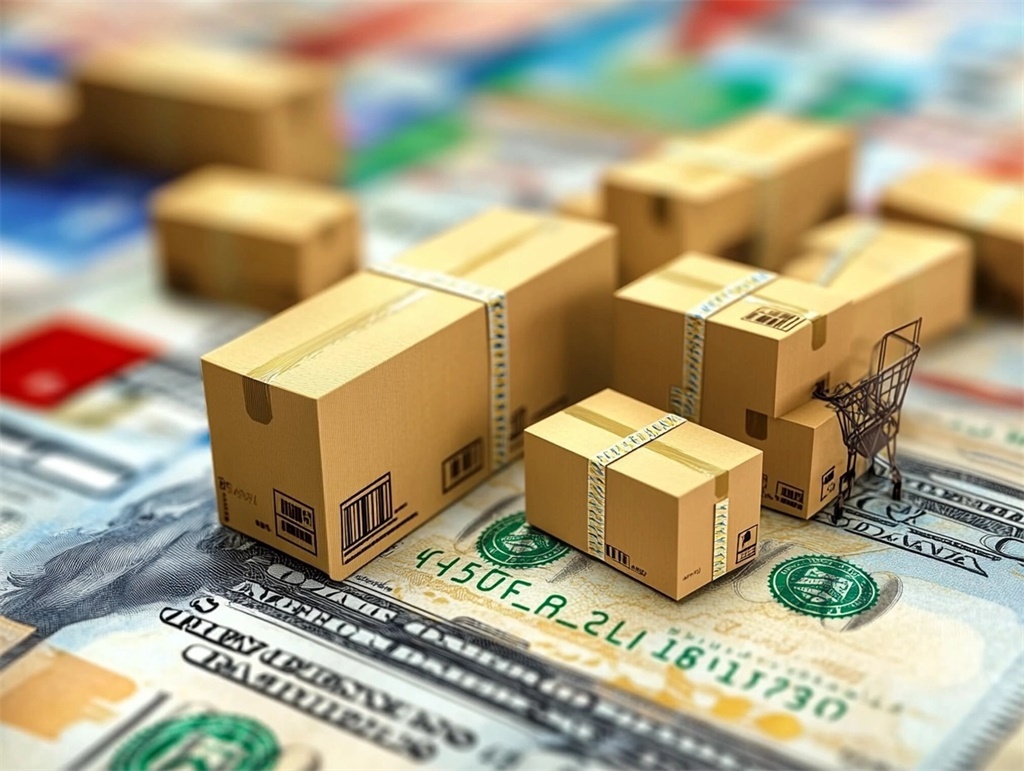Introduction
In the context of the current US tariff New Deal, the cross-border e-commerce industry is facing unprecedented challenges. Especially for Chinese sellers, the tax increase policy on 3C digital, clothing, and home goods has directly affected the cost structure and profit margin. However, amidst this wave of adjustments, the Print on Demand (POD) clothing customization model shows a glimmer of hope due to its unique flexibility and low inventory risk. This article will explore how POD clothing custom sellers can navigate through such a harsh environment and provide practical suggestions.

Under the Impact of the US Tariff New Deal, How Do POD Clothing Custom Sellers Break the Game?
Re-examine the Benefits of the POD Model
Under the pressure of the new tariff, the POD clothing customization model has emerged as a viable option for many cross-border sellers, thanks to its distinct advantages. Firstly, the POD model does not require a large amount of inventory, which reduces capital occupancy and warehousing costs. Secondly, customized products can meet the individual needs of consumers, thereby improving conversion rates. Lastly, the flexible design and production processes allow POD sellers to quickly respond to market changes and reduce risk. In the following sections, we will delve into how these strengths can be leveraged to address our current predicament.
The Influence of US Tariff New Deal on POD Clothing Customization and Countermeasures
1. Higher Tariffs Lead to Higher Costs
The tariff hike directly increases the cost of imported goods, particularly for POD sellers who rely heavily on the US market, leading to a significant rise in the cost of each item.
- Coping Strategies: Optimize the supply chain by finding more competitive suppliers; reduce costs through bulk purchasing; negotiate with logistics providers to secure better freight rates.
2. Surging Logistics Costs
- Current Situation Analysis: The prices of logistics channels like Matson Clippers have surged, compounded by the new countervailing surcharge, causing logistics costs to skyrocket.
- Coping Strategy: Adopt a multi-channel logistics plan to spread risks; consider using local warehousing services to minimize international shipping links; purchase tariff insurance to mitigate potential risks.
3. Platform Rules Adjustment
- Current Situation Analysis: Platforms such as Amazon and TikTok Shop have introduced tariff visualization tools, allowing consumers to see estimated tariffs at the time of placing orders, which influences their purchasing decisions.
- Coping Strategy: Optimize product descriptions and highlight unique selling points; offer preferential policies like free shipping or discounts to attract consumers; enhance customer service to improve satisfaction.
4. Conversion Rate Drops
- Current Situation Analysis: Due to the presence of tariff visualization tools, consumers are less inclined to make purchases, resulting in a significant decline in conversion rates.
- Coping Strategies: Increase marketing efforts and boost brand exposure through social media and KOL collaborations; conduct limited-time promotion activities to stimulate consumption; optimize website user experience to enhance user stickiness.
5. Product Quality and Design Innovation
- Current Situation Analysis: To cut costs, some sellers may compromise on product quality, which can negatively impact brand image and customer trust.
- Coping Strategies: Maintain product quality and add value through design innovation; regularly update product styles to meet consumer preferences for freshness; focus on using environmentally friendly materials to enhance the brand image.
How to Further Optimize POD Business?
Key Words: Optimize Supply Chain, Improve User Experience
1. Optimize Supply Chain Management
- Establish Long-Term Relationships with Reliable Suppliers: Ensure a stable supply of raw materials by building strong, long-term relationships with reliable suppliers.
- Adopt Advanced Supply Chain Management Systems: Implement advanced systems to improve efficiency and reduce operating costs.
2. Improve User Experience
- Optimize Website Design: Provide a smooth and seamless shopping experience by optimizing the website design.
- Enhance After-Sales Service: Timely address and resolve customer questions and issues to enhance after-sales service.
- Data-Driven Personalization: Use data analysis to understand customer needs and provide personalized recommendations and services.
Conclusion
In the face of the challenges brought by the United States tariff New Deal, POD clothing custom sellers should leverage their unique advantages. By optimizing the supply chain, controlling costs, and enhancing user experience, they can stand out in the fierce market competition. Despite the current difficult environment, the POD model still holds broad prospects for development if opportunities are seized. It is crucial to note that while the POD model offers flexibility, it also requires careful attention to air logistics costs. For those not solely relying on the POD model, a small-batch, fast-turnaround approach combined with a robust overseas warehousing system can help mitigate the impact of rising tariffs and gain a competitive edge.
FAQ
What are the main benefits of the POD model for clothing custom sellers?
Answer: The main benefits of the POD model include reduced inventory costs, the ability to meet individual consumer needs, and the flexibility to quickly adapt to market changes.
How can POD sellers cope with the increased logistics costs due to the US tariff New Deal?
Answer: POD sellers can adopt a multi-channel logistics plan, use local warehousing services, and purchase tariff insurance to manage and mitigate the increased logistics costs.
What strategies can be used to improve the conversion rate in the face of higher tariffs?
Answer: To improve conversion rates, POD sellers can enhance marketing efforts, offer promotions and discounts, and optimize the website user experience to make the shopping process more appealing and convenient.

